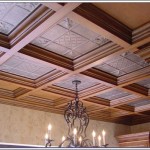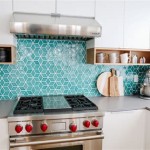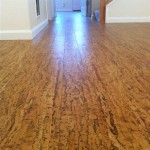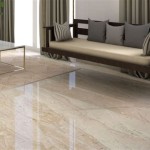Do I Need Cement Board For Tile Floor? Understanding Substrates and Tile Installation
Installing tile flooring can dramatically enhance the aesthetics and durability of a space. However, the success of any tile installation hinges on a crucial element: the substrate upon which the tiles are laid. The substrate provides the foundation for the entire flooring system, and choosing the correct material is paramount for a long-lasting, crack-free, and water-resistant result. One of the most commonly discussed and often recommended substrates for tile flooring is cement board. This article will delve into the circumstances under which cement board is necessary for tile floor installation, exploring the properties of cement board and comparing it to alternative substrate options.
The primary function of a substrate is to provide a stable, flat, and rigid surface for the tile to adhere to. It must be able to withstand the weight of the tile, the applied adhesive (thin-set mortar), and the anticipated foot traffic. Furthermore, in wet areas such as bathrooms and kitchens, the substrate must be resistant to moisture to prevent water damage, mold growth, and ultimately, the failure of the tile installation.
Cement board, also known as cement backer board, is a composite material typically composed of cement, reinforced with fiberglass mesh. This construction provides exceptional strength, water resistance, and dimensional stability. It resists warping, cracking, and rotting, making it a superior substrate in many situations, particularly those involving moisture exposure.
Key Point 1: Moisture-Prone Areas Necessitate Cement Board
The most compelling reason to use cement board for a tile floor is its inherent water resistance. Unlike plywood or oriented strand board (OSB), which can swell, warp, and degrade when exposed to moisture, cement board maintains its structural integrity. This makes it the ideal choice for areas that are frequently wet, damp, or exposed to humidity. Bathrooms, particularly shower floors and around tubs, are prime examples where cement board is virtually indispensable.
In bathrooms, water inevitably splashes onto the floor. Even with careful sealing of grout lines, some moisture can penetrate the tile surface. If the substrate is not water-resistant, this moisture can lead to significant problems. The wood substrate can rot, creating a breeding ground for mold and mildew. This can not only compromise the structural integrity of the floor but also pose health risks to the occupants. Furthermore, the swelling and contracting of a wood substrate due to moisture fluctuations can cause the tile to crack and become loose, leading to costly repairs.
Kitchens also benefit from the use of cement board, though perhaps not as critically as bathrooms. Kitchen floors are exposed to spills from cooking, dishwashing, and general food preparation. While spills should be cleaned up promptly, accidents happen, and a water-resistant substrate provides a crucial layer of protection against potential water damage. Similarly, laundry rooms, with their potential for leaks and spills from washing machines, are also good candidates for cement board.
The installation of cement board in these moisture-prone areas is not simply a precaution; it is often a building code requirement. Local building codes are designed to ensure the safety and durability of structures, and they often specify the use of water-resistant substrates in wet areas. Failure to comply with these codes can result in failed inspections and the need for costly rework.
Key Point 2: Subfloor Deflection and Cement Board's Role in Reinforcement
Another critical factor in determining the need for cement board is the amount of deflection in the subfloor. Deflection refers to the amount of flex or movement in the subfloor when subjected to weight or pressure. Excessive deflection can cause tile to crack and grout to crumble, leading to a premature failure of the flooring system. National standards, such as those set by the Tile Council of North America (TCNA), specify maximum allowable deflection for tile installations.
Cement board contributes to the overall rigidity of the floor assembly. While it is not intended to be a primary structural element, it does help to distribute weight and reduce localized stress on the subfloor. This is particularly important when installing larger format tiles, which are more susceptible to cracking if the subfloor is not sufficiently rigid. The larger the tile, the more critical it becomes to minimize deflection.
Before installing any tile flooring, it is essential to evaluate the subfloor's deflection. This can be done by consulting span tables for the joist size and spacing, as well as the thickness of the subfloor material. If the subfloor does not meet the minimum deflection requirements, reinforcing measures may be necessary. This could involve adding additional joists, sistering existing joists, or applying a layer of plywood or OSB over the existing subfloor to increase its thickness and rigidity.
In some cases, even after reinforcing the subfloor, the deflection may still be borderline. In these situations, cement board can provide an extra margin of safety and help to ensure a successful tile installation. It is crucial to use appropriate fasteners to attach the cement board to the subfloor to maximize its effectiveness in reducing deflection. The fasteners should be corrosion-resistant and of the correct length to penetrate the subfloor adequately.
Furthermore, the method of installing the cement board can also affect its performance in reducing deflection. Embedding the cement board in a layer of thin-set mortar before fastening it to the subfloor creates a more monolithic assembly, which further enhances its ability to distribute weight and reduce stress on the underlying structure.
Key Point 3: Alternatives to Cement Board and Their Limitations
While cement board is often the preferred substrate for tile flooring, there are alternative materials that can be considered in certain situations. Understanding the limitations of these alternatives is crucial to making an informed decision.
One alternative is plywood. Plywood is a wood product made by layering thin sheets of wood veneer and bonding them together with adhesive. While plywood can provide a stable and rigid surface, it is not water-resistant. As discussed previously, exposure to moisture can cause plywood to swell, warp, and rot, leading to tile failure. Therefore, plywood is generally not recommended for use as a substrate in wet areas.
Another alternative is oriented strand board (OSB). OSB is similar to plywood, but it is made from strands of wood that are compressed and bonded together. While OSB may be slightly more water-resistant than plywood, it is still susceptible to moisture damage and is not recommended for use in wet areas. Furthermore, OSB tends to be less dimensionally stable than plywood, meaning it is more prone to expansion and contraction, which can also contribute to tile cracking.
There are also specialized underlayment products designed specifically for tile flooring. Some of these products are made from various materials, including plastic or rubber, and are designed to provide a waterproof barrier and reduce deflection. These products can be a viable alternative to cement board in certain situations, but it is important to carefully evaluate their suitability for the specific application. Consider the manufacturer's recommendations, the warranty offered, and the long-term performance of the product.
Another key consideration when evaluating alternatives to cement board is the cost. While cement board may be slightly more expensive than plywood or OSB, the cost of replacing a failed tile floor due to substrate failure is significantly higher. Therefore, it is often more cost-effective in the long run to invest in a durable and water-resistant substrate like cement board.
Ultimately, the choice of substrate for a tile floor depends on a variety of factors, including the location, the expected moisture exposure, the subfloor deflection, and the budget. While alternatives to cement board may be suitable in some situations, cement board remains the gold standard for its superior water resistance, strength, and dimensional stability, making it the most reliable choice for a long-lasting and trouble-free tile installation.
Choosing the right substrate involves careful consideration of project-specific needs. Consulting with experienced tile installers or building professionals can provide valuable insights and guidance. Proper installation techniques, including appropriate fastener selection and spacing, as well as the use of thin-set mortar between the subfloor and cement board, are crucial for maximizing the benefits of cement board and ensuring a successful tile flooring project.

How To Install Cement Board On A Floor Diy Family Handyman

How To Install Hardie Backer Cement Board On Floors James Pros

Cement Backerboard Floor Tile Installation Uncookie Cutter

Cement Board Installation On Floors 5 Mistakes To Avoid Diytileguy

How To Install Cement Board The Home Depot

Cement Backerboard Floor Tile Installation Uncookie Cutter

How To Install Cement Board In 3 Easy Ways Q2 2024 Infographic

Installing Cement Backerboard For Tile Flooring Hometips

Tile Backer Board Benefits Uses Insulation

Easily Install Cement Board To Prep For Tile Installation
Related Posts








